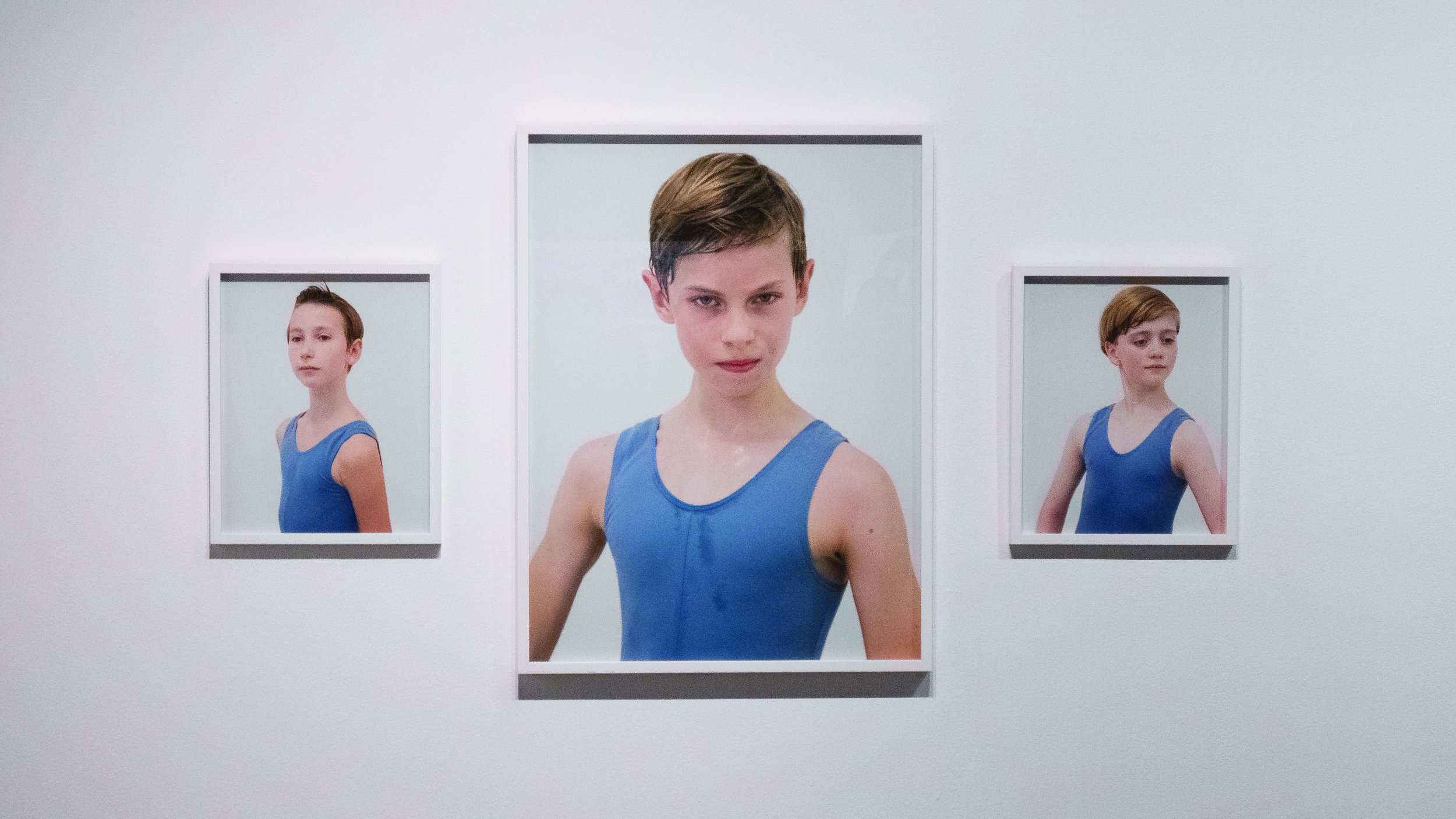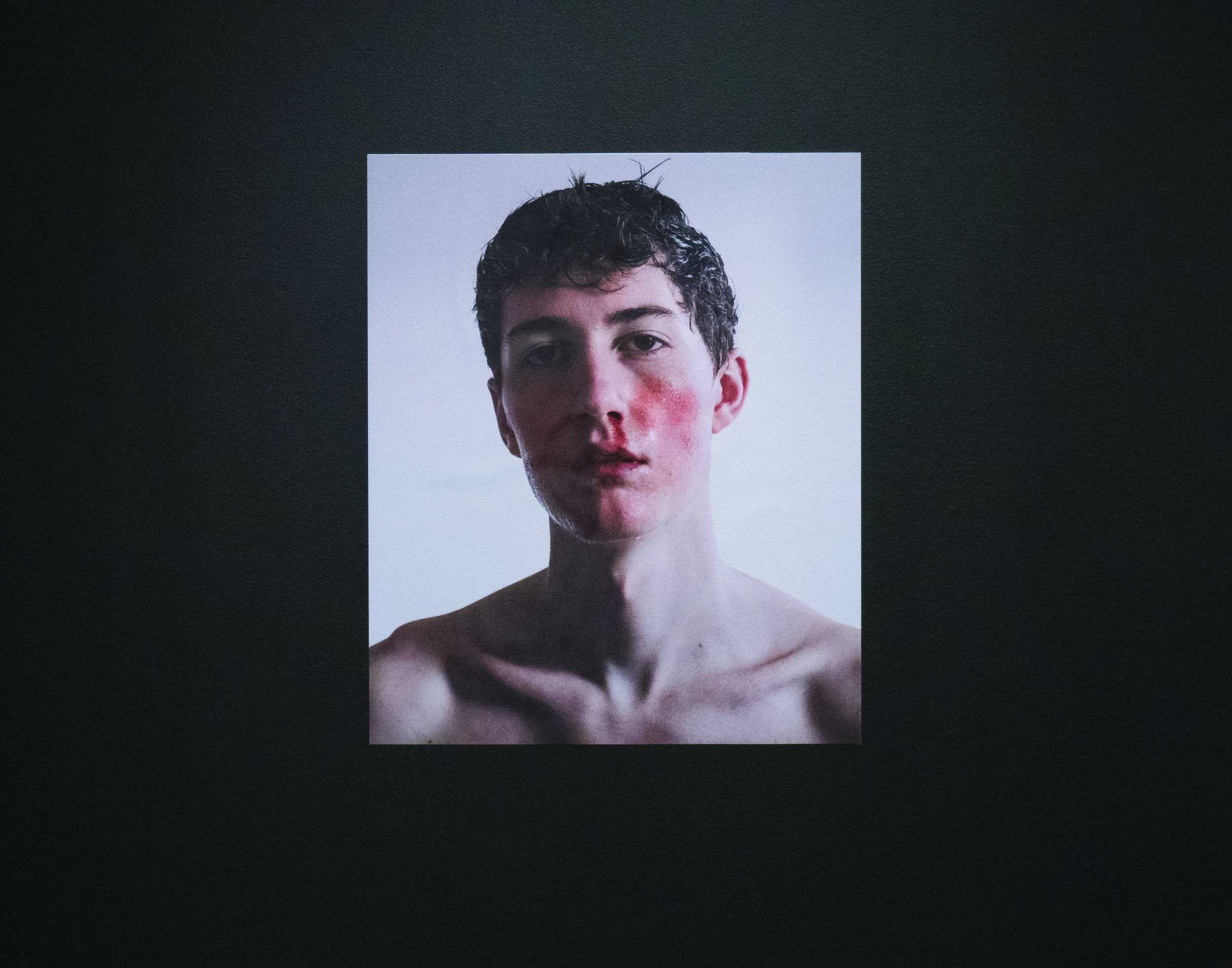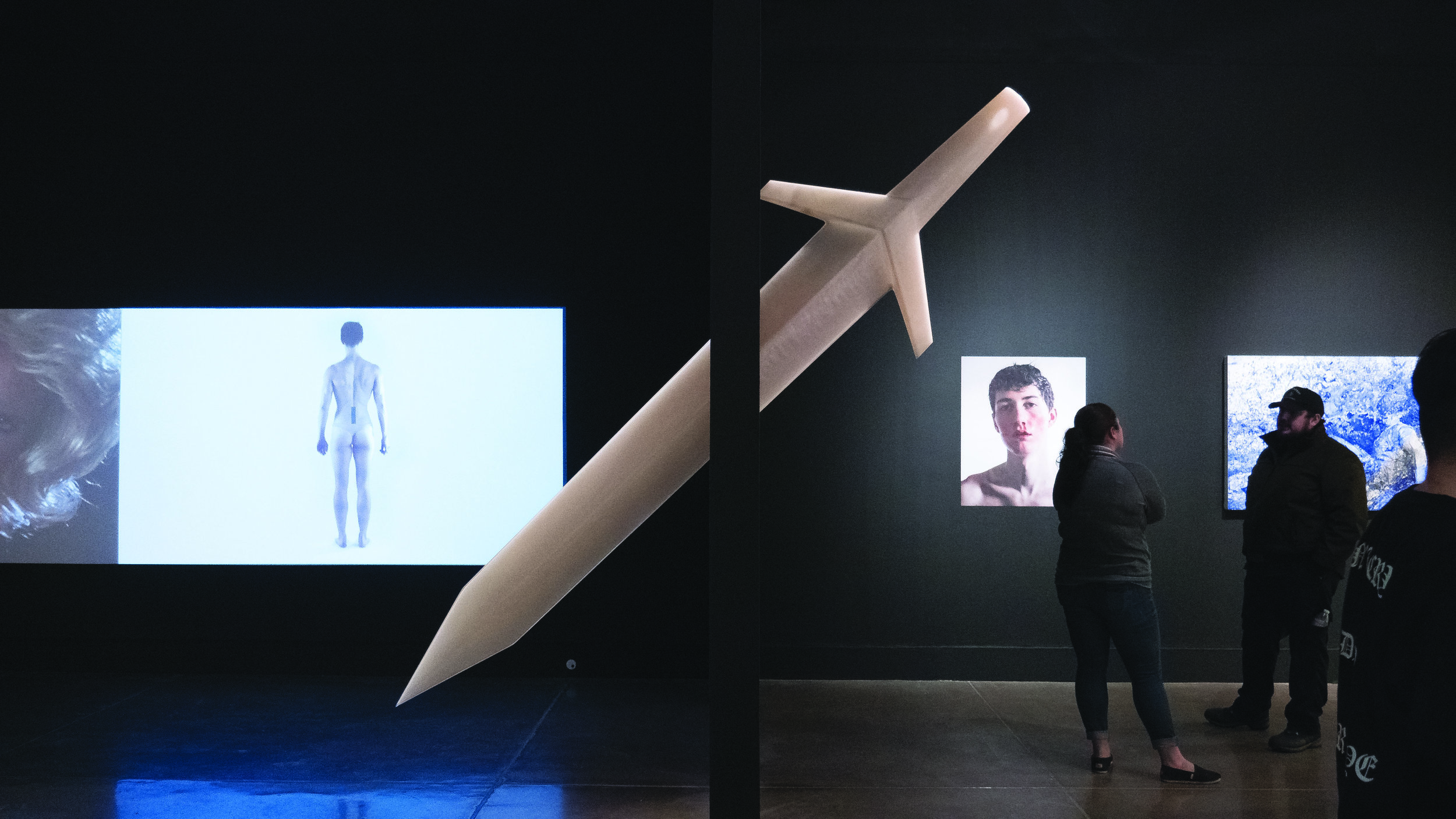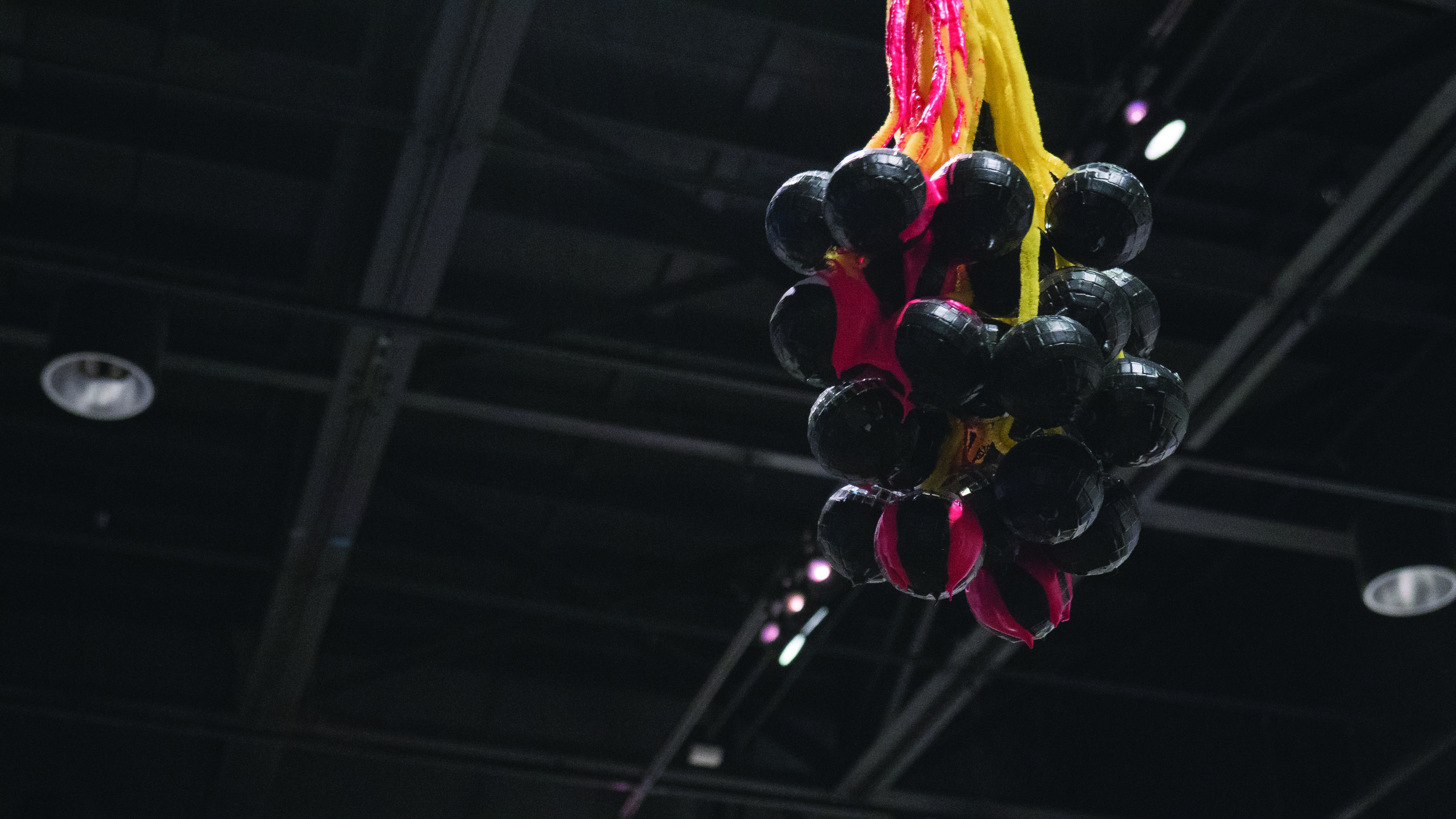'Masculinity in Question'
Above Image: The work of artist Ryan James Caruthers titled "Tryouts, After Tennis" hangs in the Wignall Museum of Contemporary Art. Photo by Hanajun Chung.
By Jullian Aiden Bravo
@Mr_Reporter_
Manliness, virility and machismo are qualities synonymous with the term “masculinity.” Tradition insists men embrace these qualities. To act otherwise is to be un-masculine — and to be un-masculine is to be un-manly.
But the “Man Up!” exhibit held at the Wignall Museum of Contemporary Art encourages observers to question the term “masculinity” and recognize that the meaning differs from person to person.
Roman Stollenwerk, exhibit curator, said he initially planned on curating an exhibit focused on athletics. But upon reaching out to various artists he recognized an additional, underlying theme in each of the artists’ work.
“A lot of the artists were approaching athletics from a perspective of masculinity,” Roman said. “Taking that as a jumping off point, I started to focus more so on that idea of masculinity.”
The bulk of public discourse regarding masculinity will almost certainly include athleticism or physical strength. This is why athleticism is a prominent theme in much of the artwork featured at the Wignall.
However, in his artworks titled “Tryouts, Boxing” and “Tryouts, After Tennis” photographer Ryan James Caruthers shares with the audience his separation from athleticism. In his artwork synopsis, Caruthers explains his internal conflict, which ultimately gave him the inspiration for his work.
Since boyhood Caruthers felt his thinly built body was never normal. He was born with a birth defect called Pectus Excavatum, a bone deformity in which the sternum grows abnormally, creating a cave-like appearance of the chest. Because of this, Caruthers distanced himself from masculinity, athleticism and his fellow male schoolmates.
“Being a closeted homosexual throughout this experience also created a further separation from other boys,” Caruthers said in his synopsis. “The experience of doing this feeds my interest for athleticism yet also highlights my overall separation from it.”
“Throughout my awkward sensual poses in these photographs the audience shall question boyhood, the connection between homosexuality and athleticism, and overall the definition of masculinity.”
So not only does the “Man Up!” exhibit explore the meaning of masculinity, it also highlights the struggles of the LGBTQ community, featuring work from artists like Devan Shimoyama who, according to his synopsis, “seeks to reimagine the black queer male body as both desirous and desirable.”
Shimoyama’s work titled “Idol Eclipsed (Johnny)” is part of a larger artwork series titled “Idol Eclipsed.” In this series, Shimoyama depicts musicians who nearly publicly disclosed their homosexuality but ultimately decided not to due to external pressure from their industry and audiences.
A similar undertone is seen in the artwork of artist Steven Frost, who drew inspiration from popular pianist Władziu Valentino Liberace, who refused to publicly admit his homosexuality, even going through great lengths to keep it a secret.
Overall, the Wignall Museum’s “Man Up” exhibit certainly challenges the public audience to question what it means to be masculine. If there is one general conclusion to draw from this exhibit, it would be that the meaning of masculinity, in today’s society, varies from gender to gender and sex to sex.
“I think part of the conversation is trying to take the idea of masculinity from an automatic assumption that it’s linked to heterosexual-cis,” Roman said. “You can be gay and identify as masculine, you can be a women and identify as masculine, you can be trans and identify as masculine and all these other combinations.”




